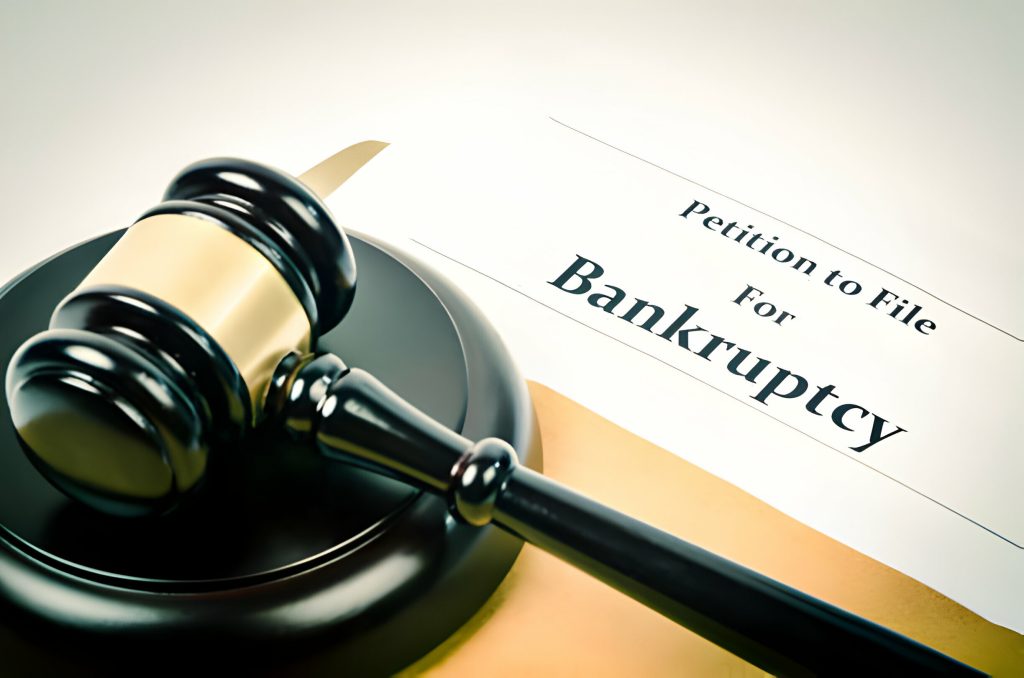Did you know that approximately 60% of bankruptcy cases involve some form of prepetition liabilities? Understanding the nuances of prepetition debts is crucial in navigating the complexities of bankruptcy proceedings. As you delve into the intricacies of this concept, you will uncover the pivotal role that prepetition liabilities play in shaping the financial landscape of companies undergoing restructuring. Curious to unravel the impact and implications of these liabilities? Let’s explore together the significance and implications they hold in the realm of bankruptcy.
Definition of Prepetition Liabilities
Understanding the intricacies of prepetition liabilities is crucial for navigating bankruptcy proceedings effectively. Prepetition liabilities refer to debts incurred before filing for bankruptcy, distinct from post-petition liabilities accrued after the filing. Proper debt classification as prepetition or post-petition aids in determining payment priorities. However, creditors often encounter challenges in recovering prepetition obligations during bankruptcy proceedings. Asset recovery plays a vital role in the potential recovery of prepetition liabilities, as secured creditors can enforce liens on debtor-owned property. Despite enforcement limitations, companies must identify which liabilities are subject to compromise and distinguish unrecoverable debts like taxes and undisclosed obligations. Contingent liabilities arising during bankruptcy further complicate the recovery process. Additionally, reorganization agreements may restrict payments to shareholders, highlighting the complexity and importance of managing prepetition liabilities effectively within the bankruptcy framework.
Classification of Prepetition Debts
Proper classification of prepetition debts in bankruptcy proceedings is essential for determining payment priorities and navigating the complexities of debt recovery. When dealing with prepetition liabilities, it is crucial to consider various factors:
- Liability Classification: Categorizing debts as prepetition or post-petition helps in prioritizing payments and managing obligations effectively.
- Asset Prioritization: Understanding which assets are available for satisfying prepetition debts is vital for financial planning and negotiations.
- Creditor Challenges: Creditors often face hurdles in collecting prepetition obligations, requiring strategic approaches and potential compromises.
- Debt Negotiation: Negotiating prepetition liabilities involves assessing the feasibility of repayment, considering the company’s financial status, and seeking mutually beneficial agreements.
Challenges in Collecting Prepetition Obligations
Facing various obstacles and complexities, creditors encounter significant challenges when attempting to collect prepetition obligations in bankruptcy proceedings. The process involves navigating through debt collection challenges, legal complexities, creditor negotiations, asset protection strategies, and payment prioritization.
| Challenges | Legal Complexities | Creditor Negotiations |
|---|---|---|
| – Limited recovery | – Interpretation of laws | – Debtor cooperation |
| – Priority payment issues | – Compliance requirements | – Settlement terms |
| – Disputed obligations | – Court proceedings | – Payment plans |
Creditors often find themselves in difficult positions due to the complex nature of bankruptcy proceedings. Legal intricacies can affect the ability to recover debts fully, while negotiations with debtors may involve compromises and detailed payment arrangements. Asset protection strategies become crucial in safeguarding creditor interests, and determining payment prioritization ensures a strategic approach to debt collection. Overall, the collection of prepetition obligations demands careful consideration of various factors to maximize recovery in the challenging landscape of bankruptcy proceedings.
Recovery and Asset Security
Navigating the complexities of bankruptcy proceedings, creditors must strategize for optimal recovery and asset security in prepetition liabilities. To ensure successful handling of prepetition debts, consider the following:
- Recovery Strategies: Implementing effective recovery strategies is crucial in maximizing your chances of recovering prepetition liabilities. Explore various legal avenues and negotiation tactics to enhance your recovery efforts.
- Asset Protection: Safeguarding assets is a key component of securing prepetition liabilities. By protecting valuable assets, you can potentially increase the pool of resources available for debt negotiation and settlement.
- Debt Negotiation: Engaging in strategic debt negotiation can help address creditor challenges and facilitate the recovery process. Effective negotiation skills are essential in reaching favorable agreements with debtors.
- Liability Recovery: Understanding the intricacies of liability recovery is essential for navigating prepetition obligations successfully. Differentiating between negotiable and non-negotiable liabilities is critical in determining the appropriate recovery approach.
Limitations on Prepetition Liability Enforcement
When enforcing prepetition liabilities, it is essential to understand the constraints that limit the recovery process. Enforcement challenges often arise due to the nature of prepetition liabilities. Creditors face hurdles in collecting these obligations, as most are reduced during bankruptcy proceedings. Recovery of prepetition liabilities depends heavily on the security of assets involved. However, not all prepetition liabilities are negotiable, and clawing back payments may be subject to compromise.
Insolvency consequences further complicate liability recovery, making certain prepetition liabilities unrecoverable. Taxes and undisclosed debts fall under this category, alongside contingent liabilities that may emerge during bankruptcy. Additionally, reorganization agreements can restrict payments to shareholders, affecting the overall recovery process. Understanding these limitations is crucial for navigating the complexities of prepetition liability enforcement, including vendor payments and potential liabilities discharge.
Special Considerations in Liability Management
Strategizing the management of liabilities in bankruptcy demands careful consideration of various factors to optimize outcomes and ensure compliance with legal obligations.
- Vendor Prioritization: Identifying critical vendors for full prepetition payments is crucial to maintain essential supplies or services during bankruptcy proceedings.
- Lease Rejections: Evaluating and potentially rejecting lease agreements can help streamline operations and reduce financial burdens on the bankrupt entity.
- Payment Clawbacks: Recovering payments made while insolvent through clawback provisions can enhance the debtor’s estate and ensure fair distribution among creditors.
- Discharge Seeking: Seeking discharge of prepetition liabilities in reorganization can provide the debtor with a fresh start and alleviate long-term financial obligations.
- Judicial Oversight: Bankruptcy judges play a vital role in overseeing the handling of prepetition liabilities, ensuring fairness and compliance with legal requirements.
Impact on Company Payments
The impact of prepetition liabilities on company payments requires thorough analysis and strategic planning to ensure financial obligations are managed effectively during the bankruptcy process. Payment implications are significant as companies navigate debt settlement and prioritize financial obligations. Understanding the classification of company liabilities is crucial in determining which payments take precedence. Prepetition liabilities can influence the allocation of available funds, affecting the ability to settle debts and satisfy creditors. Companies must carefully consider the payment impact of prepetition liabilities to maintain transparency and compliance with bankruptcy regulations. Managing company payments during bankruptcy involves balancing the need to address preexisting financial obligations while restructuring debts to achieve a viable financial future. By evaluating the implications of prepetition liabilities on payments, companies can make informed decisions that support their restructuring objectives and financial stability.
Role in Restructuring Process
In the restructuring process, careful assessment of prepetition liabilities is essential for determining the financial roadmap of the company. When considering prepetition liabilities, several key aspects come into play:
- Financial implications: Understanding prepetition liabilities helps in planning the financial restructuring of the company effectively. It allows for better allocation of resources and prioritization of payments.
- Creditors’ perspective: Assessing prepetition liabilities provides insight into the potential recovery for creditors. This information influences negotiations and settlements during the restructuring process.
- Legal implications: Properly managing prepetition liabilities ensures compliance with bankruptcy laws and regulations. It also helps in avoiding legal disputes that may arise from mishandling these obligations.
- Impact on stakeholders: The classification and treatment of prepetition liabilities can significantly impact various stakeholders, including employees, suppliers, and shareholders. Clear communication regarding these liabilities is crucial to managing stakeholder expectations during the restructuring process.





